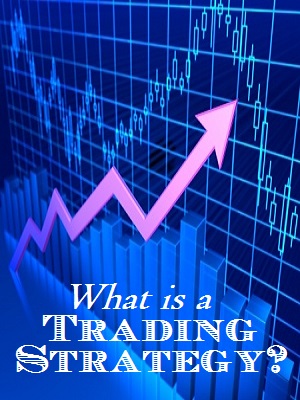Have you ever asked yourself, “What is a trading strategy?” If you have, this information is for you.
The first thing that may come to mind is a strategy to enable you to trade something. This is actually a good thirty thousand foot description but it is not enough for you to be able to understand what is meant by “trading strategy”.
As with everything in life, if you break it down into small pieces it is easier to understand. So let’s look at each of the pieces of a trading strategy.

Trading Objectives
The first step in any type of plan/strategy is to decide what you want to accomplish. There is no difference when it comes to a trading strategy. You must first decide on your objectives. This can be to make money, retire, or any other goal. I will give you a little tip about trading objectives. BE AS SPECIFIC AS YOU CAN. The more specific you are the better you will be at staying with it when things are not working as well as you had hoped.
Screening Process
So what are you going to trade? How are you going to find your trade? These are the questions the screening process is designed to answer. How you build your screening process is completely up to the type of setup you are looking to trade. Traders that have time to watch the market all day tend to have real-time screens. Other traders may look at their screens daily after the close of the market. This is probably most suited for you if you work in addition to trading.
Setup & Entry
How do you know your risk/reward? When are you going to pull the trigger? The set-up is used in two parts of the trading strategy, the screening process, and setup. The setup can be any number of patterns or rules that you use to find potential entries. Some traders use pattern recognition as a setup and others use mechanical trading rules for their setup. The point is a setup is what you use after you have screened a large number of potential securities and narrowed it down to the top few. Now you are looking for the best risk/reward setup. This also bleeds into your money management program.
Exit & Re-Entry
What is a trading strategy exit and re-entry? This is an important part of the trading strategy. There are two parts to making money. Part one is being disciplined with your entry. Part two, exiting with a profit. So it is important you have an exit you have tested and understand. Most new traders want to find an exit that gets them out at the perfect time. This is a ridiculous goal to have. The goal of the exit is to take profits and minimize losses. Re-entry is a rule which allows you to get back into a trend that may have had a temporary move that got you out. This type of move is price movement that breaks an area of support or resistance only to turn right back around and resume the trend you were trading.
Money Management
THE MOST IMPORTANT PART OF ANY TRADING SYSTEM
This part of the system has many names: Money Management, Position Sizing, Asset Allocation, or Value at Risk. If you want to swing for the fences and take bets, go to Las Vegas. When it comes to trading you need a well-thought-out money management system if you want to consistently make money year after year. There have been studies that used random entry and exit rules along with money management. They have found good money management can add value to random entries and exits over time. There are a number of ways to build a money management program from very simple to very complex. A simple way to look at this is to set a stop and use that stop to allow you to only lose 1% to 2% of your total portfolio. For example, if your stop is $23.00 and the current price is $28.00 and you are willing to lose $500 or 1% of $50,000 on the trade then you can trade 100 shares of that security.
Take the difference between $28.00 – $23.00 = $5.00 Risk $500, so you would divide $500/$5.00 = 100 shares or a total value of $2800 in that security. You are saying this security could go down to $2300 before your stop would get you out for a loss of $500.
Now you should be able to answer the question. What is a trading strategy? How you use this information is completely up to you. You will have more success if your trading strategy lines up with your trading objective and trading psychology. Some traders are less formal and have a feel for all of these steps when they trade while others need to develop a more rules-based or mechanical strategy.